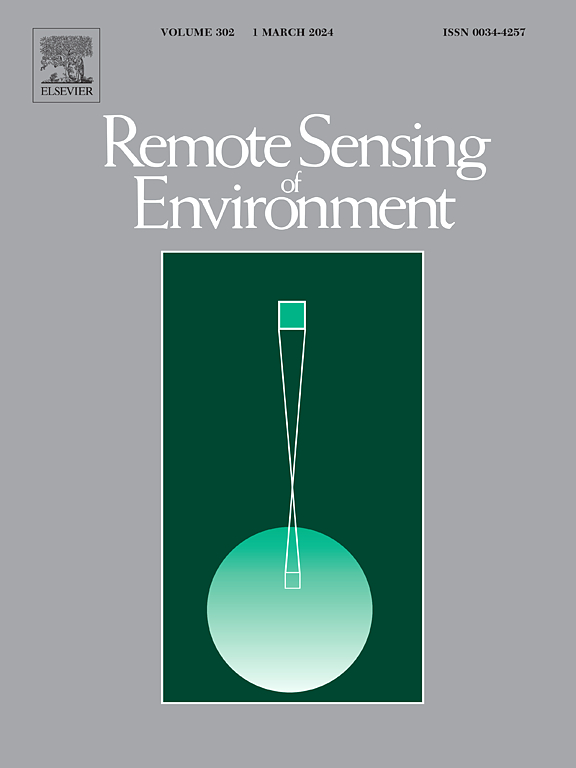Quantum yield for sun-induced chlorophyll fluorescence (ΦF) captures rice plant dynamics under interplant competition
IF 11.1
1区 地球科学
Q1 ENVIRONMENTAL SCIENCES
引用次数: 0
Abstract
Planting density and leaf angle are important factors related to rice growth and yield through interplant competition. Despite the necessity of understanding the dynamics of interplant competition according to planting density and leaf angle, detailed physiological changes throughout the growth cycle remain less clear due to the requirement for field surveys that are labor-intensive and time-consuming. Sun-induced chlorophyll fluorescence and its physiological quantum yield (ΦF) have shown its capability for plant physiological investigations and can provide new opportunities for improved monitoring of crop physiological dynamics. However, it is uncertain whether ΦF can quantify the impact of agronomic differences on the vegetative and reproductive growth of crops. In this study, we aim to explore whether ΦF can quantify physiological dynamics in rice of different leaf angle distributions under varying planting density levels. We conducted an experiment of four different planting densities (, ,, hills/ha) with two cultivars of different leaf angle distributions (i.e., erectophile and semi-erectophile leaf angle distribution) in a rice paddy. We measured ΦF and collected agronomic data to monitor plant physiological and structural changes. ΦF quantified the downregulation of photosynthetic activity at higher planting density plots during the vegetative growth period (a significant correlation between ΦF and rate of LAI increase, R2 = 0.62, p-value<0.05) and indicated differences in grain yield, which was dominantly driven by the limited carbon sink (a significant correlation between ΦF and yield, R2 = 0.44, p-value<0.1). Particularly, ΦF showed different patterns of the planting density impact on yield between the two cultivars confirming the effect of leaf angle distribution on the interplant competition or the light. Our findings showed that ΦF not only captures the difference in vegetative growth but also in reproductive growth and grain yield. This study demonstrated the importance of ΦF for physiological investigations in agroecosystems and the potential for estimating crop productivity during the grain-filling stage as well as for improved crop yield estimation.
求助全文
约1分钟内获得全文
求助全文
来源期刊

Remote Sensing of Environment
环境科学-成像科学与照相技术
CiteScore
25.10
自引率
8.90%
发文量
455
审稿时长
53 days
期刊介绍:
Remote Sensing of Environment (RSE) serves the Earth observation community by disseminating results on the theory, science, applications, and technology that contribute to advancing the field of remote sensing. With a thoroughly interdisciplinary approach, RSE encompasses terrestrial, oceanic, and atmospheric sensing.
The journal emphasizes biophysical and quantitative approaches to remote sensing at local to global scales, covering a diverse range of applications and techniques.
RSE serves as a vital platform for the exchange of knowledge and advancements in the dynamic field of remote sensing.
 求助内容:
求助内容: 应助结果提醒方式:
应助结果提醒方式:


